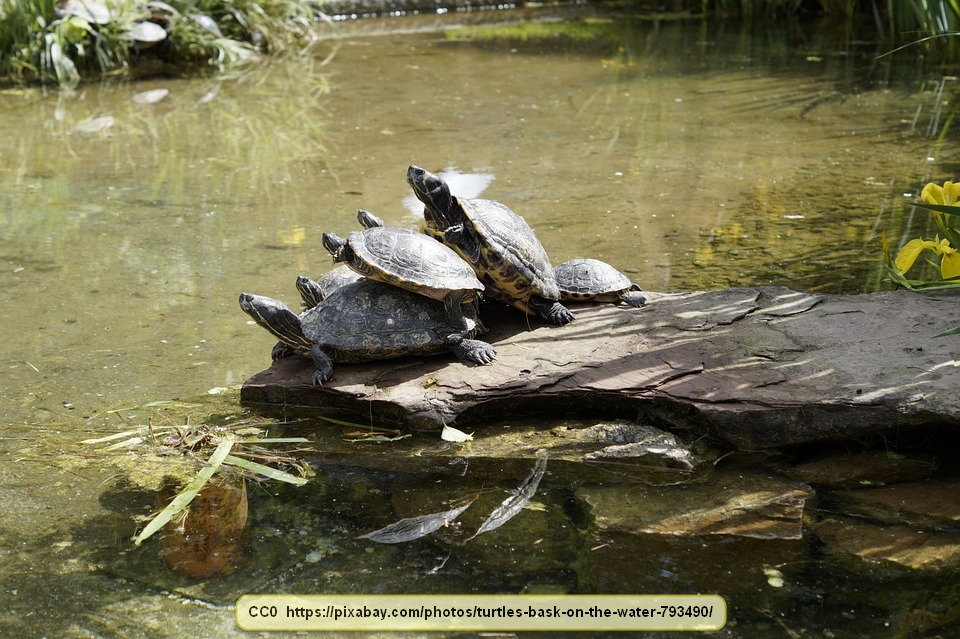
A recent question that came up was along the lines of, “Why do reptiles, such as crocodiles, like sun tanning?” As I explained, they aren’t actually sun tanning, they are basking. However, many people don’t understand why they do it.
Reptiles are cold-blooded. That is, they don’t have the means of internally regulating their body temperature. If their body temperature is low, they are sluggish. They don’t move quickly, don’t hunt, and if they have food in their stomachs, the digestion comes to nearly a standstill.
This presents a problem for the animals. They have a solution, though; basking. By laying in the sunshine, they allow the sun to warm them up. When they get to an optimal temperature, they can be active, can hunt and can digest the food they eat.
This true of reptiles that spend a great deal of time in the water, too. Animals like crocodiles, alligators, and turtles are often seen basking. Water can cool them down, so this lets them warm up. It isn’t just water reptiles that do this, though. Snakes and lizards to as well. In the early morning, it isn’t uncommon for rattlesnakes and sage lizards to bask on rocks.
Reptiles are so good at using sunshine to warm them up that they also use shade if they get too hot and need to cool down. The same rattlesnakes and sage lizards that were basking in the sunshine during the morning are often found laying in the shade of bushes during the heat of the day.
The animals actually have one advantage of using sunlight to control their body temperature. Warm-blooded animals like mice and people must eat a large amount of food, fairly continuously, because it is the digestion of the food that regulates their body temperature and produces heat, which they must maintain in order to survive. Cold-blooded animals don’t have this restriction since their body temperature is controlled externally. This is why a rattlesnake can go for over a week without eating after it has consumed a large rat. Some constrictors have been known to go well over a month without eating, after consuming a large meal.
There is a disadvantage, too. Reptiles have difficulty surviving in places that don’t warm up enough that they can have adequate temperatures for their bodies. Thus, there aren’t many snakes in northern Alaska or Canada, but there are quite a few in the southern US and Mexico.
Without basking, many reptiles wouldn’t be able to survive.





Thank you for this information that was hidden from some people????
You’re quite welcome. It isn’t that the information is hidden, it is more a matter of not being taught anymore. It used to be taught in school.
Thank you????
Thank you for sharing this information about the reptiles who are basking.
You are very welcome.
I do some things about reptiles. Your blog did revive my memories of what I learned in school.
Great information. I already knew that reptiles were cold-blooded and needed the sun to warm up but I did not know the exact mechanism of the food digestion’s involvement in this. But one thing I am glad of is the fact that we do not have too many snakes here in Canada except maybe a bit more in the southern part of the prairie provinces. In Quebec where I reside, the most snakes and the bggest snakes I ever saw were the little garter snakes as we call them. Nonetheless they still scare me as I do not like anything that slithers or glides except maybe for a cat that is just gliding along the floor to either warm or cool him or herself off.
Garter snakes are useful in ways and so are water snakes. You’re right, though. Nowhere in Canada are snakes especially common. I seldom even see them in Montana, though we have a couple of types of rattlesnakes, as well as garter snakes, water snakes, and gopher snakes. There might even be some bull snakes and that would be a reasonable bet since they will eat rattlesnakes, even though they aren’t venomous.
A neat sight to see is a number of pond turtles basking, one upon the other.
I never knows these information ……..
Quite a few people didn’t know this. Knowledge is a good thing. 😀
Informative, thanks for sharing.
I’m glad if this was helpful.